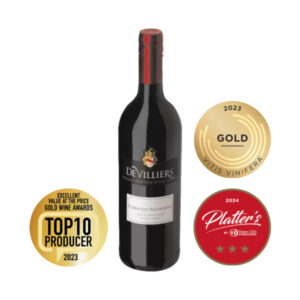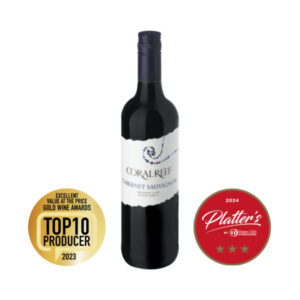
The Perfect Red Wine for Your Palate: Decoding the Characteristics of Merlot, Cabernet Sauvignon, and Pinotage

Table of Contents
When it comes to red wine, there are countless varieties to choose from, each with its own distinct characteristics and flavors. In this comprehensive comparison, we will delve into the world of red wine by exploring the qualities and nuances of three popular varieties: Merlot, Cabernet Sauvignon, and Pinotage. By understanding the unique attributes of each wine, you can make an informed decision on which one best suits your taste preferences. Whether you’re a South African wine enthusiast or simply seeking the finest red wines available, this comparison will provide you with valuable insights to enhance your wine appreciation journey.
In this comparison, we will explore Merlot, Cabernet Sauvignon, and Pinotage, three prominent red wine varieties known for their distinct characteristics. Merlot is praised for its smoothness, medium body, and notes of ripe fruit, making it an approachable choice for many wine lovers. Cabernet Sauvignon, on the other hand, is known for its full-bodied nature, bold flavors, and aging potential. Lastly, Pinotage, a uniquely South African creation, exhibits rich, earthy flavors with a touch of spice. By comparing these three wines across various categories, including taste, characteristics, growing regions, and food pairings, we aim to help you discover the best red wine for your personal preferences.
Overview of Merlot
Taste and Aromas
Merlot is renowned for its smooth, velvety texture and a flavor profile that often includes notes of ripe blackberries, cherries, plums, and herbs. It tends to exhibit medium acidity and tannin levels, offering a balanced and approachable drinking experience. Aromas commonly associated with Merlot include red fruits, chocolate, vanilla, and sometimes earthy or floral undertones.
Characteristics and Growing Regions
Merlot grapes thrive in a variety of climates, with notable growing regions found in France (particularly Bordeaux and the Right Bank), Italy, the United States (specifically California and Washington), and Chile. The grape variety is highly versatile and adaptable, allowing winemakers to produce a wide range of styles, from light and fruity to more robust and complex offerings.
Food Pairing
Due to its softer tannins and approachable nature, Merlot pairs well with an array of dishes. It complements roasted meats, such as roasted lamb or beef, as well as grilled poultry. Merlot’s fruit-forward profile also makes it a great match for tomato-based pasta dishes, mushroom risotto, and mild cheeses like Camembert or Gouda. Its smoothness and medium body make it an excellent standalone sipping wine as well.
Popular Merlot Brands
When exploring Merlot options, you may come across several renowned brands that consistently deliver exceptional quality. Some notable Merlot producers include:
a. Château Pétrus (Pomerol, Bordeaux, France): Known for producing some of the most sought-after and expensive Merlots in the world, Château Pétrus showcases the rich and complex character of this variety.
b. Duckhorn Vineyards (Napa Valley, California, USA): Duckhorn Vineyards produces elegant and refined Merlots with layers of fruit, spice, and velvety textures, showcasing the potential of Merlot in California.
c. Tenuta dell’Ornellaia (Bolgheri, Tuscany, Italy): This Italian winery is famous for its Bordeaux-style blends, with Merlot playing a significant role. Their Merlot-based wines exhibit depth, structure, and a harmonious blend of flavors.
-
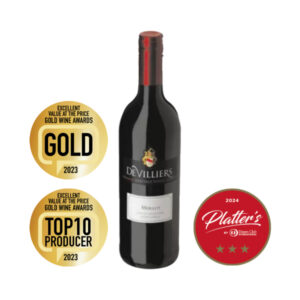 De Villiers Wines MerlotR360,00
De Villiers Wines MerlotR360,00 -
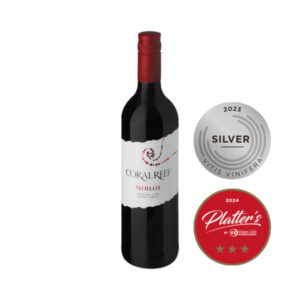 Coral Reef Wines MerlotR360,00
Coral Reef Wines MerlotR360,00 -
 Black Tie Wines MerlotR360,00
Black Tie Wines MerlotR360,00 -
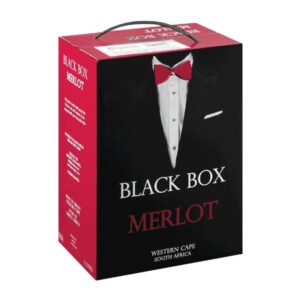 Black Box Wines MerlotR880,00
Black Box Wines MerlotR880,00
Overview of Cabernet Sauvignon
Taste and Aromas
Cabernet Sauvignon is celebrated for its full-bodied nature, intense flavors, and firm tannins. It often displays bold notes of blackcurrant, blackberry, plum, and dark cherry, accompanied by hints of cedar, tobacco, and herbs. This wine boasts a rich and powerful profile, which contributes to its reputation as a classic, age-worthy red wine.
Characteristics and Growing Regions
Cabernet Sauvignon thrives in various regions worldwide. Some of the most renowned areas for Cabernet Sauvignon production include Bordeaux in France, particularly the Left Bank, Napa Valley in California, USA, Coonawarra and Margaret River in Australia, and Maipo Valley in Chile. The grape variety prefers warmer climates and well-drained soils, which allow it to develop its signature depth and complexity.
Food Pairing
The robust and structured nature of Cabernet Sauvignon makes it an excellent pairing for hearty and flavorful dishes. It pairs exceptionally well with grilled or roasted red meats, such as steak, lamb chops, or venison. The wine’s firm tannins help cut through the richness of the meat, while its intense fruit flavors complement the savory elements. Additionally, Cabernet Sauvignon is a great companion to aged cheeses, charcuterie, and dishes with roasted mushrooms or herbs.
Popular Cabernet Sauvignon Brands
Cabernet Sauvignon is produced by numerous prestigious wineries worldwide. Here are a few renowned brands that consistently deliver exceptional Cabernet Sauvignon:
a. Château Lafite Rothschild (Pauillac, Bordeaux, France): With a history dating back centuries, Château Lafite Rothschild crafts iconic Cabernet Sauvignon-based wines known for their elegance, structure, and longevity.
b. Opus One (Napa Valley, California, USA): Founded as a collaboration between Baron Philippe de Rothschild of Château Mouton Rothschild and Robert Mondavi, Opus One produces Bordeaux-style blends with Cabernet Sauvignon as the core grape. Their wines offer a harmonious fusion of power, finesse, and complexity.
c. Penfolds Grange (South Australia): Penfolds Grange is an Australian icon, often referred to as one of the world’s greatest wines. Their flagship wine is a blend primarily based on Cabernet Sauvignon, showcasing the unique expression of this variety in the Australian terroir. Penfolds Grange wines are renowned for their concentration, structure, and ability to age gracefully.
Overview of Pinotage
Taste and Aromas
Pinotage is a unique red wine variety that originated in South Africa. It showcases a distinctive flavor profile characterised by rich, dark fruit flavors such as blackberry and plum, often accompanied by earthy notes, smokiness, and a touch of spice. Pinotage can range from medium to full-bodied, with moderate tannins and a smooth texture.
Characteristics and Growing Regions
Pinotage is primarily grown in South Africa, particularly in the Western Cape region. The grape is a cross between Pinot Noir and Cinsault (also known as Hermitage), resulting in a unique South African varietal. The country’s diverse terroir, including different soil types and climates, allows for a range of Pinotage styles, from fruit-forward and easy-drinking to more complex and age-worthy offerings.
Food Pairing
Pinotage’s bold flavors and moderate tannins make it a versatile wine for food pairing. It pairs well with grilled meats, particularly game meats like ostrich or venison, as well as barbecued dishes. Pinotage’s smoky and earthy undertones complement dishes with roasted vegetables, hearty stews, and spicy cuisines. It can also be enjoyed alongside South African specialties like boerewors (sausages) or biltong (dried cured meat).
Popular Pinotage Brands
South Africa is home to several esteemed wineries that produce exceptional Pinotage. Here are a few notable Pinotage brands:
a. Kanonkop (Stellenbosch, South Africa): Kanonkop is renowned for its high-quality Pinotage wines. Their offerings often display the rich, concentrated flavors and complex aromatics that have come to define South African Pinotage.
b. Beyerskloof (Stellenbosch, South Africa): Beyerskloof is a leading producer of Pinotage, specialising in crafting fruit-forward and accessible expressions of this uniquely South African varietal. Their wines are known for their balance and approachability.
c. Simonsig (Stellenbosch, South Africa): Simonsig is one of the oldest wine estates in South Africa and has been producing Pinotage since the grape’s early days. Their Pinotage wines showcase the varietal’s signature flavors and offer a true representation of the South African winemaking tradition.
-
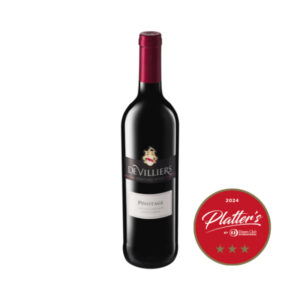 De Villiers Wines PinotageR360,00
De Villiers Wines PinotageR360,00 -
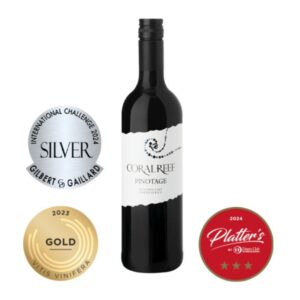 Coral Reef Wines PinotageR360,00
Coral Reef Wines PinotageR360,00 -
 Black Tie Wines PinotageR360,00
Black Tie Wines PinotageR360,00 -
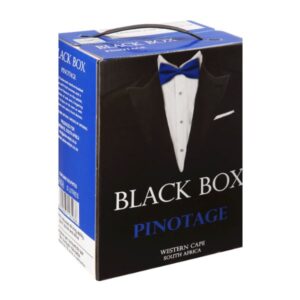 Black Box Wines PinotageR860,00
Black Box Wines PinotageR860,00
Comparing Merlot, Cabernet Sauvignon, and Pinotage
Flavor Profiles
Merlot, Cabernet Sauvignon, and Pinotage each have distinct flavor profiles that set them apart. Merlot tends to be softer and more approachable, with ripe fruit flavors and smooth textures. Cabernet Sauvignon, on the other hand, is bold and full-bodied, often showcasing dark fruit, cedar, and herbaceous notes. Pinotage combines rich dark fruit flavors with earthy and smoky undertones, offering a unique South African character.
Aging Potential
When it comes to aging potential, Cabernet Sauvignon typically takes the lead. Its high tannin levels and robust structure allow it to age gracefully for many years, developing additional complexity and depth. Merlot can also age well, but generally for a shorter period compared to Cabernet Sauvignon. Pinotage, while it can benefit from some aging, is often enjoyed in its youth to appreciate its vibrant fruit flavors.
Tannin Levels
Tannins, which come from grape skins and seeds, contribute to the structure and mouth feel of a wine. In terms of tannin levels, Cabernet Sauvignon tends to have higher tannins, which can provide a firm and drying sensation in the mouth. These tannins contribute to the wine’s aging potential and ability to pair well with rich and fatty foods. Merlot generally has softer and smoother tannins, offering a more velvety and approachable texture. Pinotage falls somewhere in between, with moderate tannins that contribute to its structure without overpowering the palate.
Versatility and Food Pairing
When it comes to food pairing, all three red wine varieties offer unique opportunities. Merlot’s smoothness and approachability make it a versatile companion for a wide range of dishes. It pairs well with roasted meats, poultry, pasta dishes, and various cheeses. Cabernet Sauvignon’s bold flavors and firm tannins make it an ideal match for hearty and flavorful meals, such as grilled steaks, braised lamb, or aged cheeses. Pinotage’s rich fruit flavors and earthy undertones complement dishes with smoky or spiced elements, making it an excellent choice for barbecues, roasted game meats, and South African cuisine.
Regional Differences
Another aspect to consider when comparing these red wine varieties is the influence of regional differences. Merlot is grown in various regions worldwide, each contributing its own characteristics to the wine. Bordeaux Merlots tend to showcase more structure and complexity, while California Merlots often exhibit ripe fruit flavors and a velvety texture. Cabernet Sauvignon from Bordeaux has a reputation for elegance and aging potential, while Napa Valley Cabernet Sauvignons are known for their boldness and opulence. Pinotage, being a South African specialty, carries the unique characteristics of the region’s terroir, reflecting the diversity of styles and expressions found within the country.
Conclusion: Unveiling the Best Red Wine for Your Taste
After a thorough exploration of Merlot, Cabernet Sauvignon, and Pinotage, it becomes evident that each red wine variety has its own strengths and unique qualities. Merlot offers approachability, smoothness, and fruit-forward flavors, making it an excellent choice for those seeking a versatile and easy-drinking red wine. Cabernet Sauvignon stands out with its full-bodied nature, bold flavors, and aging potential, appealing to those who appreciate structured and powerful wines with the ability to evolve over time. Pinotage, a South African creation, showcases rich fruit flavors, earthy undertones, and a touch of spice, providing a distinctive option for those seeking something truly unique.
The best red wine for your taste ultimately depends on your preferences and the occasion. If you enjoy wines that are smooth and fruit-driven, Merlot may be the ideal choice. If you prefer robust and age-worthy wines with bold flavors, Cabernet Sauvignon might be your go-to. For those who seek an adventurous experience and want to explore the flavors of South Africa, Pinotage offers a captivating and distinct profile. Consider the occasion, your personal preferences, and the food pairings you enjoy, as these factors can guide you toward the best red wine for your taste.
Frequently Asked Questions (FAQ)
Q1: Are Merlot, Cabernet Sauvignon, and Pinotage dry or sweet wines?
A1: Merlot, Cabernet Sauvignon, and Pinotage are typically dry red wines. While there may be some variation in residual sugar levels, these varieties are predominantly dry in style.
Q2: Which red wine is the best for aging?
A2: Cabernet Sauvignon is renowned for its aging potential, often developing additional complexity and character over time. With proper cellaring conditions and aging techniques, Cabernet Sauvignon can evolve and improve for many years, sometimes even decades.
Q3: Can I pair Merlot, Cabernet Sauvignon, or Pinotage with seafood?
A3: While red wines are generally better suited for pairing with red meats, there are seafood dishes that can work well with certain red wines. For example, grilled or roasted salmon can pair nicely with a lighter-bodied and fruit-forward Merlot. However, it’s important to consider the specific flavors and preparations of the seafood dish to ensure a harmonious pairing.
Q4: Which red wine is the best choice for beginners?
A4: Merlot is often considered a great entry point for those new to red wine. Its approachable nature, smoothness, and fruit-forward flavors make it an excellent choice for beginners who may be exploring red wines for the first time.
Q5: Can Pinotage be aged like Cabernet Sauvignon?
A5: While Pinotage can benefit from some aging, it is generally enjoyed in its youth to appreciate its vibrant fruit flavors. However, there are some premium Pinotage wines that are crafted for aging and can develop further complexity over time. It’s best to consult specific producer recommendations and vintage quality for Pinotage wines intended for aging.
Q6: Are these red wine varieties only produced in their respective regions?
A6: While Merlot, Cabernet Sauvignon, and Pinotage are historically associated with specific regions, they are now cultivated in various wine-producing countries around the world. For example, you can find excellent Merlot and Cabernet Sauvignon from regions like California, Italy, Chile, and Australia. However, each region may offer its own unique expression and style of these wine varieties.
Q7: Can I blend Merlot and Cabernet Sauvignon together?
A7: Yes, blending Merlot and Cabernet Sauvignon is a common practice in winemaking. In fact, many Bordeaux-style wines are blends of these two varieties. The combination of Merlot’s softness and fruitiness with Cabernet Sauvignon’s structure and depth can create a well-balanced and complex wine.
Q8: How should I store these red wines?
A8: It is recommended to store red wines in a cool, dark place with consistent temperature and humidity levels. Ideally, the temperature should be around 13-15°C, and the humidity should be around 70%. Proper storage conditions help preserve the integrity and aging potential of the wines.
Q9: Are there any health benefits associated with drinking red wine?
A9: Moderate consumption of red wine has been linked to potential health benefits, particularly due to the presence of antioxidants like resveratrol. However, it’s important to note that these benefits are best realised when consumed in moderation as part of a balanced lifestyle, and individual results may vary.
Q10: Are there any vegan or vegetarian considerations with these red wines?
A10: In general, red wines are suitable for vegans and vegetarians as they are typically made without animal-derived ingredients. However, it’s advisable to check with specific wine producers or look for vegan or vegetarian certifications on the wine labels to ensure compliance with dietary preferences or restrictions.
Remember to always drink responsibly and in accordance with legal drinking age requirements in your region.
In conclusion, the world of red wine offers a vast array of flavors, characteristics, and experiences to explore. Merlot, Cabernet Sauvignon, and Pinotage are three distinct red wine varieties that cater to different palates and preferences. Merlot delights with its smoothness and approachability, while Cabernet Sauvignon impresses with its boldness and aging potential. Pinotage, as a unique South African creation reflects the terroir and spirit of the region, offering a captivating and distinct experience.
When choosing the best red wine for your taste, consider your personal preferences, the occasion, and the food pairings you enjoy. Whether you prefer the fruit-forward and easy-drinking nature of Merlot, the powerful and age-worthy characteristics of Cabernet Sauvignon, or the unique South African flair of Pinotage, there is a red wine variety that will suit your palate.
Explore different regions and producers to discover the nuances and expressions of each variety. From the renowned Château Pétrus Merlots to the iconic Penfolds Grange Cabernet Sauvignons, and the esteemed Pinotage producers like Kanonkop and Beyerskloof, there is a world of exceptional red wines waiting to be explored.
Remember to store your red wines properly and consider the suggested food pairings to enhance your tasting experience. Whether you’re enjoying a glass of Merlot with a hearty pasta dish, savoring a Cabernet Sauvignon alongside a perfectly grilled steak, or experiencing the unique flavors of Pinotage with South African cuisine, the world of red wine offers endless possibilities for enjoyment.
So raise your glass and embark on a journey of discovering and savoring the best red wines that the world has to offer. Cheers!



